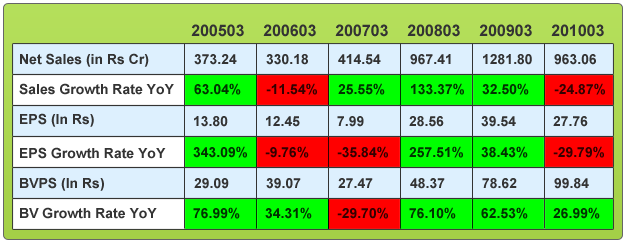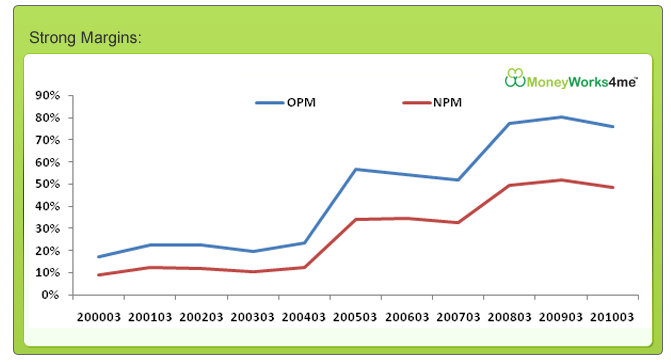After the phenomenal debut of Coal India in capital market, the public sector enterprise Manganese Ore India Ltd (MOIL) is all set to hit capital markets with its IPO on 26 November 2010.
So, what’s the offer?
There will be around 20% dilution (3.36 cr shares) by the government – 10% by the central government and 5% each by the state governments of Maharashtra and Madhya Pradesh. From this divestment, the governments plan to raise approximately Rs 1250 crores and the company would not receive any proceeds from the issue.
Tell me more about the Company…
MOIL is a ‘Mini-Ratna’ public sector enterprise and India’s largest producer of manganese ore by volume. It is head-quartered at Nagpur. With over four decades of experience in manganese ore mining, it enjoys a dominant status with 50% share in the domestic manganese market. MOIL is one of the lowest cost producers of manganese ore in the world. MOIL operates 10 mines, six located in the Nagpur and Bhandara districts of Maharashtra and four in the Balaghat district of Madhya Pradesh. At present, its annual production of manganese ore is 1,093,363 tonnes (1.1 MTPA) which is expected to increase to 1.5 MTPA by FY2015.
What sets the company apart?
Financial Performance:
MOIL’s financial performance has been very good in last 7-8 years, considering the cyclical natural of the industry. It has managed more than 21% CAGR growth in Net Sales in last 9 years. Its EPS has also grown by more than 32% CAGR and reached Rs 39 per share in FY2009, from Rs 2 in FY2001. An impressive ROIC average of 50% in the last six years indicates efficient utilisation of funds. The company has maintained a zero debt balance sheet and very high cash reserve (more than Rs 1700 crores), indicating no strain on earnings going forward.

However, in FY2010, its performance was not very good mainly due to crash in manganese ore prices and lower demand from steel companies. For the financial year FY10, MOIL has reported net sales of Rs 963 crore, as against Rs 1282 crore in FY09 and net profit at Rs 466.35 crore versus Rs 664 crore. Its Operating margin declined to 63% versus 68% and even PAT margin slipped to 48% as against 51.7% in FY2009.
Strong balance Sheet:
MOIL has a very strong balance sheet and it is reported to have around Rs 1700 Crores of reserves. Its strong financial track record and steady cash flows from existing operations provides it with sufficient resources to fund ongoing and future projects, support its working capital requirements and maintain a healthy level of cash on its balance sheet. With no debt on its books, the company can expect a steady growth in its earnings, without any distortions.
Strong Margins:
The operating and net margins of the company are very healthy and have been maintained at around 70% and 50% levels respectively in the past three years. It aims to become a vertically-integrated manganese ore producer, by leveraging its midstream and downstream capability through its beneficiation and value-added production plants, together with the use of captive power generation. Considering, its plans to improve efficiency, equipment and technology and cost control measures and operational integration, we can say that the company will show improvements in margins going forward.

Strong Mining Presence:
MOIL is the largest producer of manganese ore by volume in India. MOIL operates 10 mines, six located in the Nagpur and Bhandara districts of Maharashtra and four in the Balaghat district of Madhya Pradesh. Its production of manganese ore increased from 864,890 tonnes in FY 2006 to 1,093,363 tonnes in FY 2010. As of July 1, 2010, it has access to approximately 69 million tonnes of reserves with an average manganese content of over 40%, indicating better quality products.
Expansion Plans to meet High Demand:
To meet the rising demand of manganese ore, MOIL plans to expand its manganese ore production capacity at its existing mines. Currently MOIL is producing about 1.1 million tonne per annum, which is expected to increase to 1.5 million tonne by FY2015. It is also expected to add to its current reserves and resources by undertaking exploration in and around its existing lease areas. In addition, an area of approximately 814.71 hectares in the State of Maharashtra has been reserved for MOIL for exploration purpose by the Ministry of Mines.
Better Pricing Power:
MOIL’s reserves of manganese iron ore are of the better quality (average manganese content of over 40%). This helps it to charge premium compared to its domestic as well as global competitors. The average price the company realized in FY2010 was Rs 11,600 per metric tonne, which was better than any private player’s realisation in the domestic market and amongst the best across the globe.
Integrated Growth:
In order to become a fully integrated company, MOIL has entered into many value addition projects, such as Ferro Manganese Plant through a JV with SAIL at Balaghat mine and Electrolytic Manganese Dioxide (EMD) Plant (1000 TPA) at Dongri Buzurg mine. It is setting up a new Silico Manganese Plant (112,500 TPA) by means of joint ventures entered into with Rashtriya Ispat Nigam Limited. MOIL has also diversified into renewable energy and has set up wind farm of 20 MW in MP. These forward integration plans, if successful, are expected to boost its margins significantly in coming years.
Steel industry to drive growth:
Manganese ore is primarily used to make ferro-alloys for steel production. According to the Ministry of Steel (AR 2009-2010), India is currently the fifth largest producer of crude steel in the world with a crude steel production of 66.34 MT in 2009. The crude steel production is expected to reach 120 MTPA by FY 2015. This is expected to result in continued high demand for manganese ore and there is likely to be a huge gap between the availability and requirement of quality manganese ore. Currently MOIL fulfills around 50% of the total supply of manganese ore in India and is expected to increase its production capacity by 40-50% by FY2015 to match the high demand from steel industry. Going forward, we can expect a rise in the realisation and market share of the company due to enhanced production capacity.
But, what are the concerns?
Prices and sales volumes for MOIL’s manganese ore and manganese products are dependent on the steel industry which is cyclical in nature, and any decrease in such demand or prices adversely affects its revenues and results in lower profit. For e.g. recent global market fluctuations and economic downturn affected the steel industry internationally, including in India, resulting in a decrease in the demand and prices for manganese ore in 2009. Sales prices and volumes in the manganese ore mining industry depend mainly on the prevailing and expected level of demand for manganese ore in the steel industry. During periods of sluggish or declining regional or world economic growth, demand for steel products generally decreases, which usually leads to corresponding reductions in demand for manganese ore.
Thus, we can conclude that MOIL‘s positives include access to stable earnings, better pricing power, rising market share and steady improvements in margins. It has also diversified its income streams in the form of Ferro Manganese Plant, Electrolytic Manganese Dioxide Plant and renewable energy. These, coupled with the expected high growth in steel sector in the country indicate a brighter future for the company.
So, should I invest?
The company’s manganese production is expected to go up roughly about 10% pa; this, along with the company’s focus on margin improvements by innovation, integration, beneficiation etc, will generate an 18% EPS growth rate Y-O-Y on an average, in the coming years. Considering its future growth prospects, the positive outlook of Steel and Mining industries, its near monopoly and Mini-Navratna status, we expect MOIL to trade in PE range of 8-9 going forward. Thus, considering a PE range of 8-9 and an EPS growth rate of 18%, the MRP (Intrinsic value) band for MOIL comes out to Rs. 400-446 per share.
The price band for this public issue has been fixed at Rs.340-375 per share; and employees of MOIL and retail investors will get 5% discount to the issue price. With this 5% discount, the maximum price a retail investor would pay for the stock is Rs 356 per share. According to our analysis, the IPO is sensibly priced and available at an attractive valuation.
Thus, the stock’s offer price of Rs. 356 for retail investors is at a discount of around 11-20% to its MRP. Considering MOIL’s near monopoly position and huge demand for manganese ore, this is a good long term bet for retail investors. Combining this with the attractive valuation, we advice retail investors to consider subscribing to the issue, from a long term perspective.
Disclaimer: This publication has been prepared solely for information purpose and does not constitute a solicitation to any person to buy or sell a security. It does not constitute a personal recommendation or take into account the particular investment objectives, financial situations or needs of an individual client or a corporate/s or any entity/ies. The person should use his/her own judgment while taking investment decisions.
If you liked what you read and would like to put it in to practice Register at MoneyWorks4me.com. You will get amazing FREE features that will enable you to invest in Stocks and Mutual Funds the right way.
Need help on Investing? And more….Puchho Befikar
Kyunki yeh paise ka mamala hai
Start Chat | Request a Callback | Call 020 6725 8333 | WhatsApp 8055769463










Coal India IPO was a success. But, Power Grid declined after opening.The same fate awaits for MOIL also? especially athe present stage of market declines?
Hi,
The valuations of all the IPOs is based on the company fundamentals and future growth prospects and is independent of market movements on the listing day. This is a long-term valuation and should not be considered for listing gains. And hence same is true for MOIL.
Agreed & Considered that the MOIL is a good bet for long term…..NOW the price at which we strike does matter, to pick this scrip……in the given current market conditions (choppy situations and multiple sharp declines…) and the expected/long waited…… huge corrections in the market….MOIL has no exception wrt the price declines….this was already proved with the PowerGrid…
So now the question is……….. to pick this scrip at this price or wait for a decline, post listing due to market corrections….
Then why should we invest during the IPO itself, Can buy later from the market??
good article for IPO.
Very good article!
&
where do i get to see MOIL’ balance sheet?
@ Pathakjd @ Siddesh – Thanks a lot for the appreciation. You can get MOIL’s Balance Sheet in its Red Herring Prospectus which is available on SEBI’s website. Also, the company’s Balance Sheet and Profit & Loss account can be found on the MOIL website itself under the latest updates section.
very useful article, i have got many important points about MOIL. Thanksalot for Moneyworks team.
good analysis
Thanks a lot for the appreciation.
Since its launch in Nov 2010 it is constantly going down. Today it is trading at 242. What could be the reason for wrong assessment?